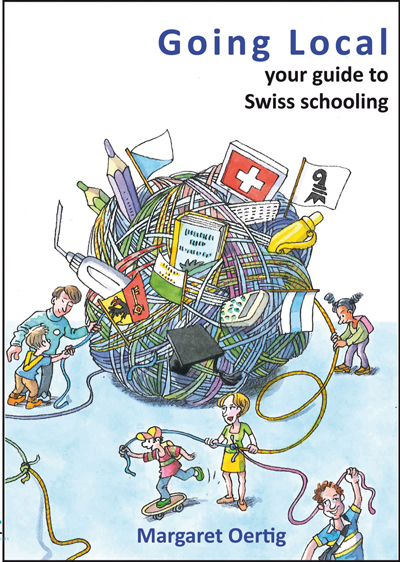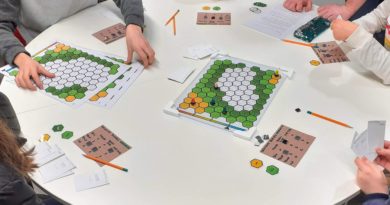Going Local: Your Kids in Swiss Schools
When we moved to Switzerland 14 years ago, my husband and I had already decided that our then-baby daughter would eventually attend the local (Zurich) schools. He had heard that Swiss school kids performed better than American kids in science and math, and we both wanted our daughter (and later, our son) to connect with local children and speak Swiss- and High German. This is probably the thinking of most expatriate families who “go local,” i.e., put their kids into the local schools. (The cost of international and private schools can, of course, also be a factor.) Anyway, we “went local” back in 2002, when Ellie entered kindergarten. Now she is in the third year of lower secondary school (Sekundarschule), and our son is in the fifth class. “Lower secondary school” is, I believe, the U.K. term for what Americans would call junior high.
After all of the delight and frustration and confusion of our experience in the local schools so far, I was very interested in Margaret Oertig’s new book Going Local: Your Guide to Swiss Schooling (Bergli Books, 2012). It is not so much that I need the system explained anymore (well, maybe a little), but that I was eager to read about it from a less personal viewpoint than my own. And, actually, I did suspect that I still had something to learn.
Margaret Oertig has been in Switzerland since 1987. She and her Swiss husband have two daughters who both went through Swiss schools. She has a Master’s degree in education and delivers lectures on intercultural issues. I enjoyed her book Beyond Chocolate (Bergli Books, 2011) a few years ago, which examines certain aspects of Swiss culture that tend to befuddle those of us from Anglophone countries.
Oertig’s inspirations for Going Local were the areas where expatriates have the most confusion and resistance (she sensibly uses the more neutral word “challenge”) with the Swiss education system. The focus on independence, with kindergarteners being expected to walk to school without adult accompaniment, and the “deficit” system, where teachers focus on pupils’ weaknesses over promoting their strengths, are two of the earliest surprises for many. Slightly later comes the tracking into the different levels of secondary education.
I use the word “tracking” to describe how children are aimed at different schools after primary school (here in canton Zurich an exam at the end of sixth class can get you into the six-year high school, or Langzeitgymnasium; otherwise you go to the A or B level lower secondary school, with another chance to try for four-year high school after the eighth and ninth A-level classes). However, Oertig points out that using that word nowadays gives the system short shrift. The system is more porous than it was even a generation ago, and there are opportunities to enter a more academic “path” or “pathway” (Oertig’s preferred terms, as “track” implies inflexibility) at many points. Going Local gives many examples and descriptions of the available pathways, carefully trying to include mention of the differences between cantons, which are considerable. For example, I did not realize that pupils remain together through lower secondary school in the canton of Ticino, needing only good marks (and no brutal qualifying exam!) to enter Liceo (Gymnasium/high school) after the ninth class.
With my daughter currently in the ninth class, I found Oertig’s discussions of all post-primary education very helpful. She cautions that writing about the Swiss education system these days is like trying to hit a moving target. With the HarmoS proposal having passed in 2006, the harmonization of compulsory education across cantons (whereas previously education was strictly a matter for each individual canton) is a major work in progress. Oertig’s book gives an overview of HarmoS as of 2012.
I would recommend this book to anyone with a child in the Swiss education system or planning to put a child there. There are personal stories throughout, to illustrate and personalize specific situations; part of Oertig’s research for Going Local was interviews with expat parents of students in Swiss schools. Of course, the book may be easiest to understand once you have had some experience. I certainly would not have wanted to tackle all of the secondary education information when my children were in kindergarten, but the first part of the book, on kindergarten and primary school and the pedagogical concepts that guide the curriculum, would have been very useful.
For example, Oertig includes mention of Remo Largo; apparently, he is the Swiss child development guru who declared, among other things, that each child should be allowed to develop at his/her own pace. I do not have an argument with that, but systematizing such a concept creates a bit of a paradox, at least for me. That is a whole other article, of course. I only mention Largo to give a further example of why this is a useful and informative book, which includes a good index and some references to other resources. If you plan to go local, do read Going Local.
By Carol McDonald
Carol’s kids have been in the Zurich schools for almost 11 years now, and are content. She sometimes wonders, however, whether a combination of American optimism and Swiss pragmatism might produce the best of all possible school systems.




